In which, as the year comes to its end, our friends and collaborators look back and share their moments:
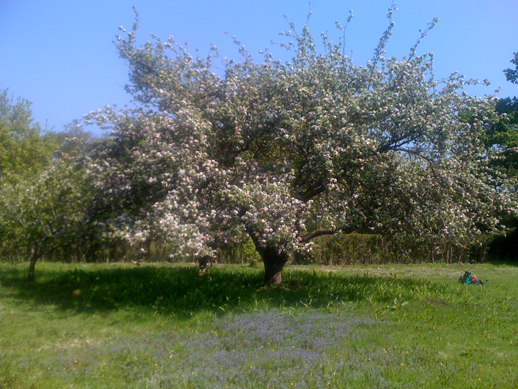 the tree in blossom earlier in the year
the tree in blossom earlier in the year
One morning in October I looked across the garden and saw that the big apple tree was in trouble. One of its four main branches had snapped and was lying across the grass at an unnatural angle, like the twisted leg of an injured sportsman. A few weeks later David, the local gravedigger, and chainsaw owner, came over and lopped off the branch, revealing a dark rotten hole that stretched down the middle of the trunk into the earth. After 90 years, the tree was nearing the end of its life, and whilst it would be ridiculous to get too upset over a plant dying it was strangely affecting – as if a chunk of the past was finally being untethered from the present.
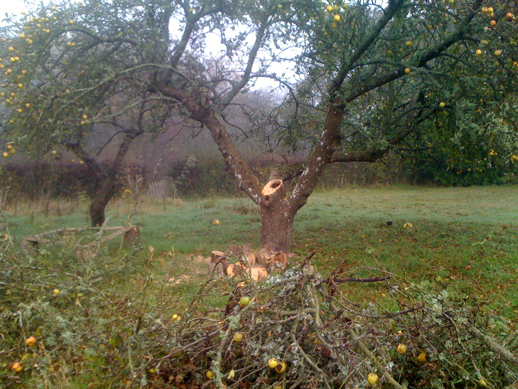 after the branch was cut off
after the branch was cut off
The tree was part of an orchard that once stretched round the gardens of two neighbouring houses Woodbarton and Woodbarton Cottage, that lie on Ditchling Common in Sussex that have been occupied on and off by my family since the late 1920s.
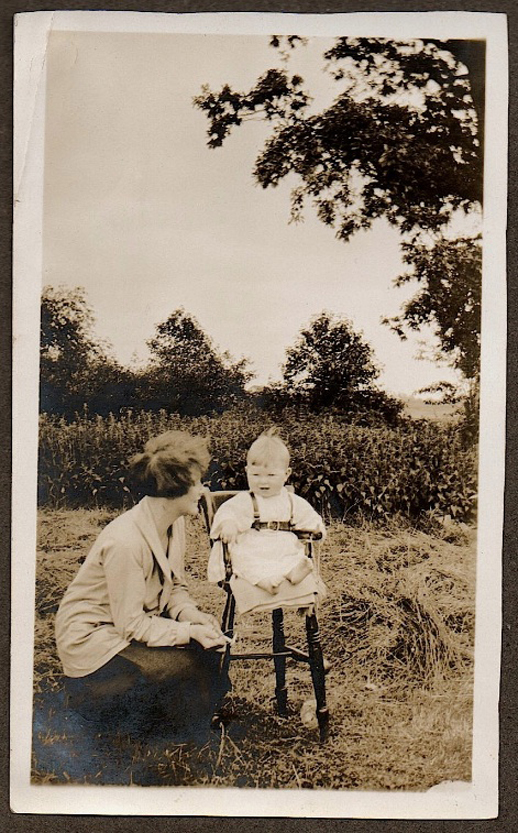 my grandmother Celie KilBride and my mother Clare under the trees in 1932
my grandmother Celie KilBride and my mother Clare under the trees in 1932
The orchard was planted a few years before my family moved in by three young men, Denis Tegetmeier, Reggie Lawson and David Jones (the Welsh artist and modernist poet) who were then living in Woodbarton Cottage. They had come to Ditchling Common, as my grandfather would, to be part of a community of Catholic craftsmen that had been formed by, amongst others, the artist Eric Gill.
The inhabitants of Woodbarton Cottage wished to be ‘independent of the local markets’ and alongside the orchard they had a goat, a sow for breeding, two stock pigs and three skeps of bees. The Gill’s lived just down the drive and due to the earnest nature of the young men in Woodbarton Cottage his daughter Petra nicknamed the house ‘the Sorrowful Mysteries’. She later became engaged to David Jones but ended up marrying and spending a long and happy life with Denis Tegetmeier.
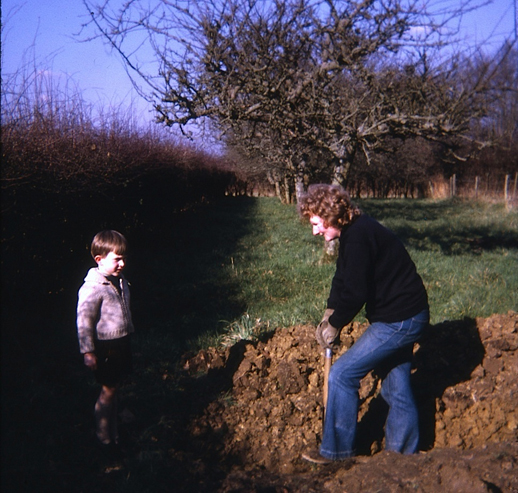 my aunt and me aged five in the orchard in 1974
my aunt and me aged five in the orchard in 1974
Over the years the original two dozen trees have been whittled down. I remember as a teenager in the mid 1980s there were around ten left and by 1998 when three generations of my family gathered underneath them for a joint birthday party (my 30th, my aunt’s 50th and my great aunt’s 85th), they numbered four or five. Now only two remain. The larger is a Lane’s Prince Albert and the smaller an Early Worcester and although the trees look very beautiful the fruit they produce is not that distinguished.
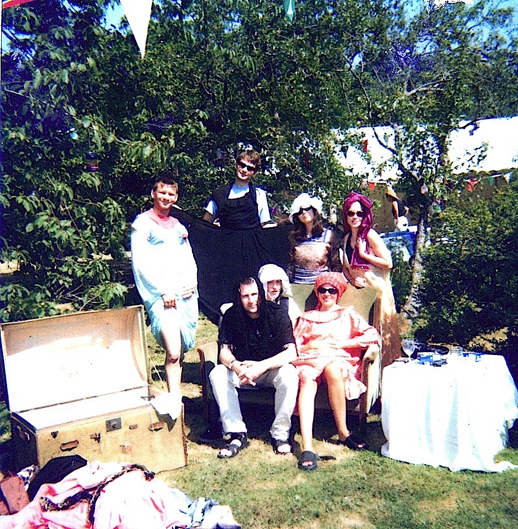 under the trees again this time dressing up on day two of my 30th birthday party in 1998, I am sat down in the black t-shirt
under the trees again this time dressing up on day two of my 30th birthday party in 1998, I am sat down in the black t-shirt
What they lack in quality they make up for in quantity. Last week I guiltily counted over two thousand apples lying slowly rotting in the grass. And there are a further three hundred still clinging, like the last guests at a party, onto the bare branches of the tree. Add to this the number I used to make crumble, cider, juice and jelly and I think, conservatively, the two trees produced three thousand apples this year. Over their lifetime the trees must have grown over a hundred thousand apples. My mother complains that every single day of her childhood she ate stewed apples for pudding (my grandfather stored them through the winter in the loft wrapped up in newspaper).
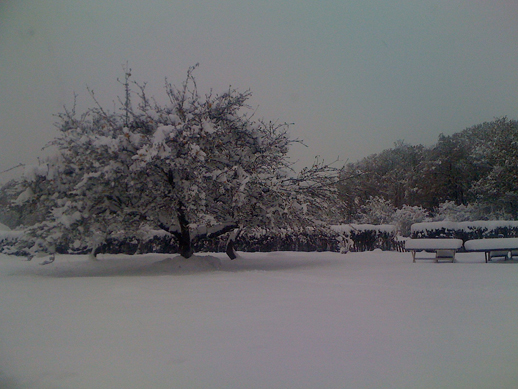 the last two trees during the snow in December 2010
the last two trees during the snow in December 2010
Tonight is Twelfth Night a busy evening for Morris dancing sides and other lovers of folklore who will be gathering in orchards round the country to wassail – sing, dance and make noise to ward off evil spirits and encourage this year’s crop. And while you won’t find me waving my hankie in the garden after dark, I will be raising a glass to the apple trees, an important part of my personal geography, and wishing that all the things one loves, however old, have a few more years left in them. Happy New Year.